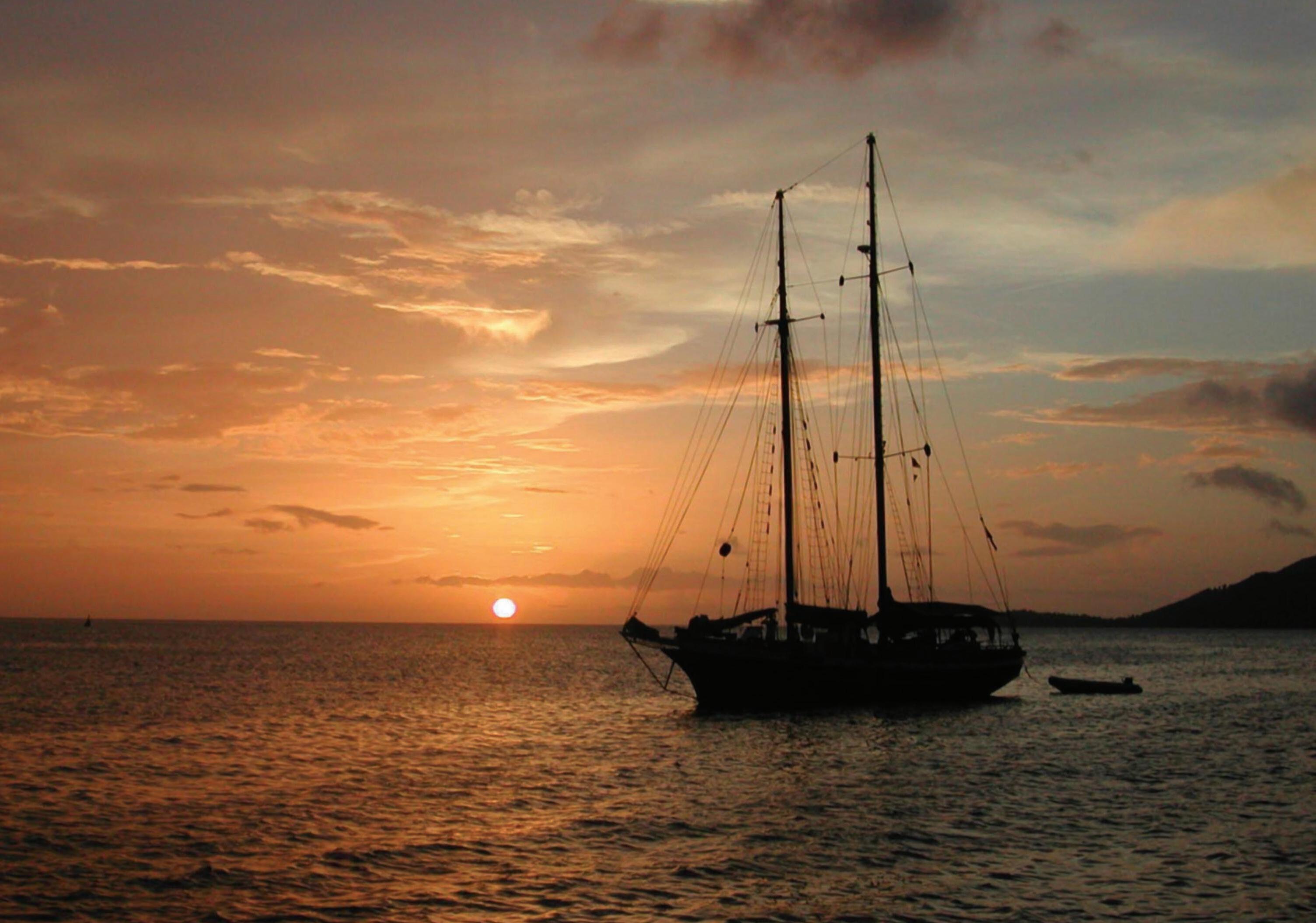




SEA|MESTER MISSION
TO PROVIDE LIFE-CHANGING EDUCATIONAL ADVENTURES AT SEA THROUGH WHICH PARTICIPANTS ULTIMATELY DISCOVER THAT IT IS THE JOURNEY, RATHER THAN THE DESTINATION, THAT MATTERS MOST.








TO PROVIDE LIFE-CHANGING EDUCATIONAL ADVENTURES AT SEA THROUGH WHICH PARTICIPANTS ULTIMATELY DISCOVER THAT IT IS THE JOURNEY, RATHER THAN THE DESTINATION, THAT MATTERS MOST.


MARINE BIOLOGY & OCEANOGRAPHY
SEAMANSHIP & NAVIGATION
LEADERSHIP & COMMUNICATION

If you are looking for a college semester abroad or gap year academic adventure, consider an experience that will stand as a benchmark in your education, a life-defining exploration of sea and self.
"We are currently tied up Mediterranean style at Marina Zea in Athens Greece, our final destination. After three months together it’s time for us to part ways… Although this chapter of our lives is over we will always have the memories we shared aboard Argo and the incredible journey she carried us on. Together we spanned three continents, seven time zones, one ocean, six seas and Suez, the world’s longest canal without locks and three major world religions. 6,700 nautical miles later we leave a little wiser, a bit saltier and very proud of the tremendous accomplishment we’ve achieved together as a crew."
Learning at its best is an active process not bound by the four walls of a traditional classroom. Sea|mester challenges you every day with college-level academics and the responsibility of playing an active and integral part in the outcome of the voyage. As part of the crew on Vela, Argo, or Ocean Star, you learn by doing, seeing, and experiencing. You study marine biology and oceanography by conducting research diving on reefs; acquire knowledge of geology trekking through mountainous terrain; master meteorology and navigation as you plot your course across seas, and develop leadership and communication skills working together with your crewmates.
abaord S/Y Argo
For most students, it is something they will only read about in books. For you, it will be something that inspires and enlightens, that is ultimately transformative because you will discover it is the journey, not the destination that matters most. Whether you are traveling island-to-island in the Caribbean aboard Ocean Star or continent-to-continent on Vela or Argo, the experiences you have on-board will indeed leave you a little wiser, a bit saltier and very proud of all that you and your crewmates have accomplished.

FOR VESSEL LOCATIONS AND TRIP LOGS, VISIT OUR WEBSITE AT WWW.SEAMESTER.COM

Sea|mester was borne of three men’s passion for the sea and their desire to share that passion with others.
Experiential educator and adventurer, British-born
Mike Meighan learned scuba diving and sailing at 15. He then traveled the Mediterranean teaching scuba and sailing before entering Southampton University in the UK. There he took a First Class Joint Honors degree in Oceanography and Marine Biology. In 1995, Mike joined Jim at ActionQuest as the program’s biologist, oceanographer and scuba instructor.
His passion for the water and for experiential academics led him, in 1998, to develop a sister program to ActionQuest, one for students 18 and up.
With the acquisition of the schooner Ocean Star in 2000, Sea|mester’s year-round college-level academic program was under sail.
As a young man Jim Stoll was an avid ocean racer, crewing aboard legendary yachts like Jack Eckerd’s Panacea, S.A. Long’s Ondine and Jim Kilroy’s Kialoa. In 1970, Jim became the owner and captain of the 156-ft. school ship Te Vega and her sister ship, the 175-ft. Te Quest. It was aboard these two vessels that Jim first began to develop his programs to teach young adults, 13 – 17, sailing and hands-on academics. After 12 years and 50,000 miles of cruising throughout Europe, the Mediterranean, South American and Caribbean waters, Jim returned to his childhood home in Sarasota, Florida and began ActionQuest, a non-traditional summer program that challenged teens with high-action adventure on summertime voyages aboard 50-ft sailing yachts through the Caribbean.
Travis joined the team in 1995 having graduated from the U.S. Merchant Marine Academy with a degree in Marine Engineering. Always a sailor, Travis competed at both national and international levels, culminating in a bid for the U.S. Olympic Sailing Team in 1996. Travis holds an MCA/IYT International Master of Ocean Yachts, US Coast Guard Captain’s License and is an Instructor Evaluator for US Sailing. He is also a PADI Master Scuba Diver Trainer.
As Director of Operations and Marine Superintendent, Travis is responsible for day to day operations as well as all Sea|mester vessels and equipment.
Over time, the success of Sea|mester’s program made possible the realization of a long-held dream – the construction of specifically designed schooners that would circumnavigate the globe. The school ship, Argo, was built in 2006 and her sister-ship, Vela, in 2019. Setting sail with 24 students each semester, Argo and Vela’s educational boundaries are limitless.
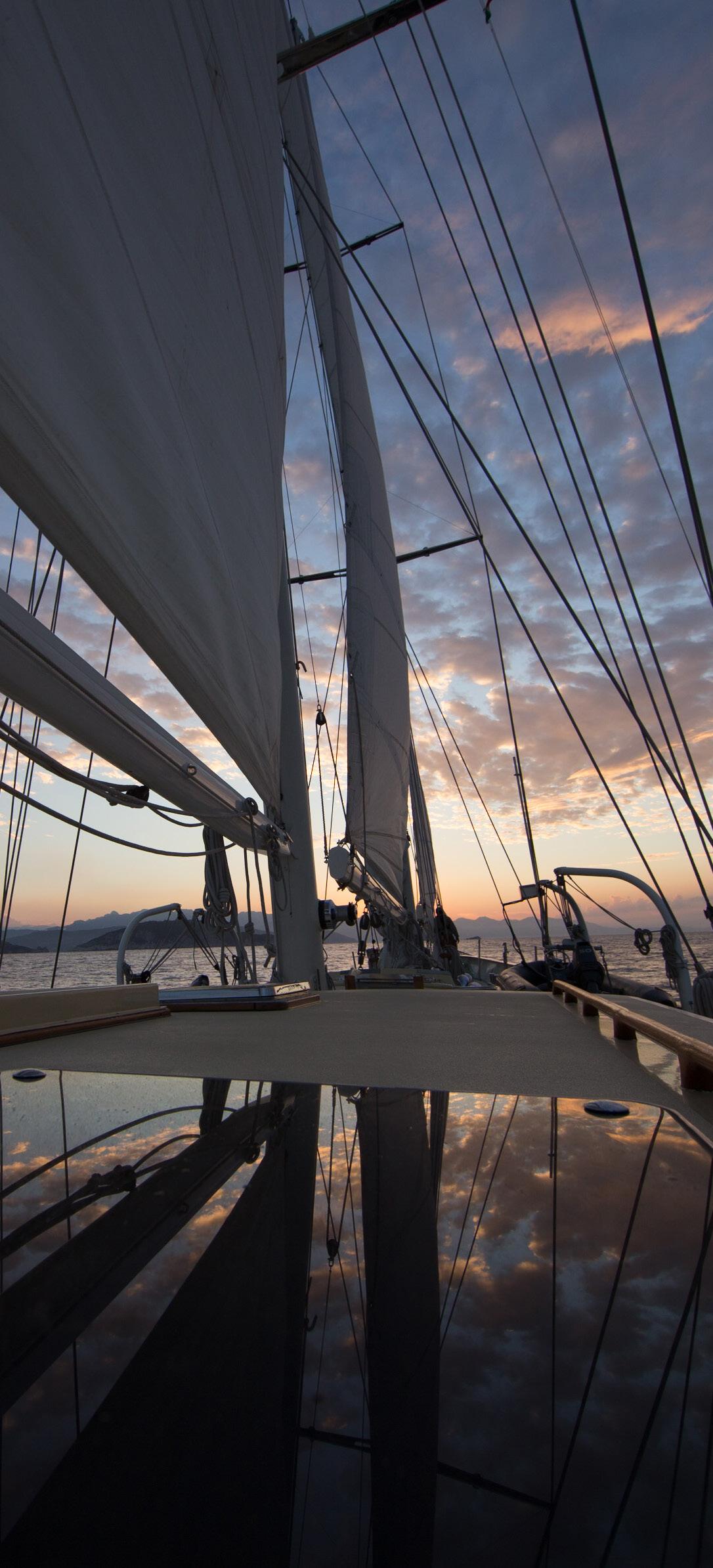
LEARN MORE ABOUT THE BUILDING OF ARGO AND VELA ON OUR BUILD BLOG AT WWW.SEAMESTER.COM
ON EACH CIRCUMNAVIGATION, VELA AND ARGO SAIL APPROXIMATELY 27,500 MILES DURING THE 480 DAYS THAT STUDENTS ARE ABOARD. THIS WORKS OUT TO BE 57 MILES PER DAY; IMAGINE YOUR CLASSROOM DOING THAT!

If the heart and soul of the Sea|mester experience are the students and crew, then the body would have to be Vela, Argo, and Ocean Star, our three world-class schooners.
Over the course of a voyage, the vessel becomes much more than just a mode of transportation, just the classroom or even just a home. Our students often tell us that the vessel, in many ways, becomes part of the team, part of themselves. Taking pride in how she looks, how she feels; the vessel becomes as equally important as any one of the living crew.
While our vessels vary in design and voyage, when they are en route, it’s due to our students taking charge. It is our hope that these vessels become an agent of growth for each and every student.
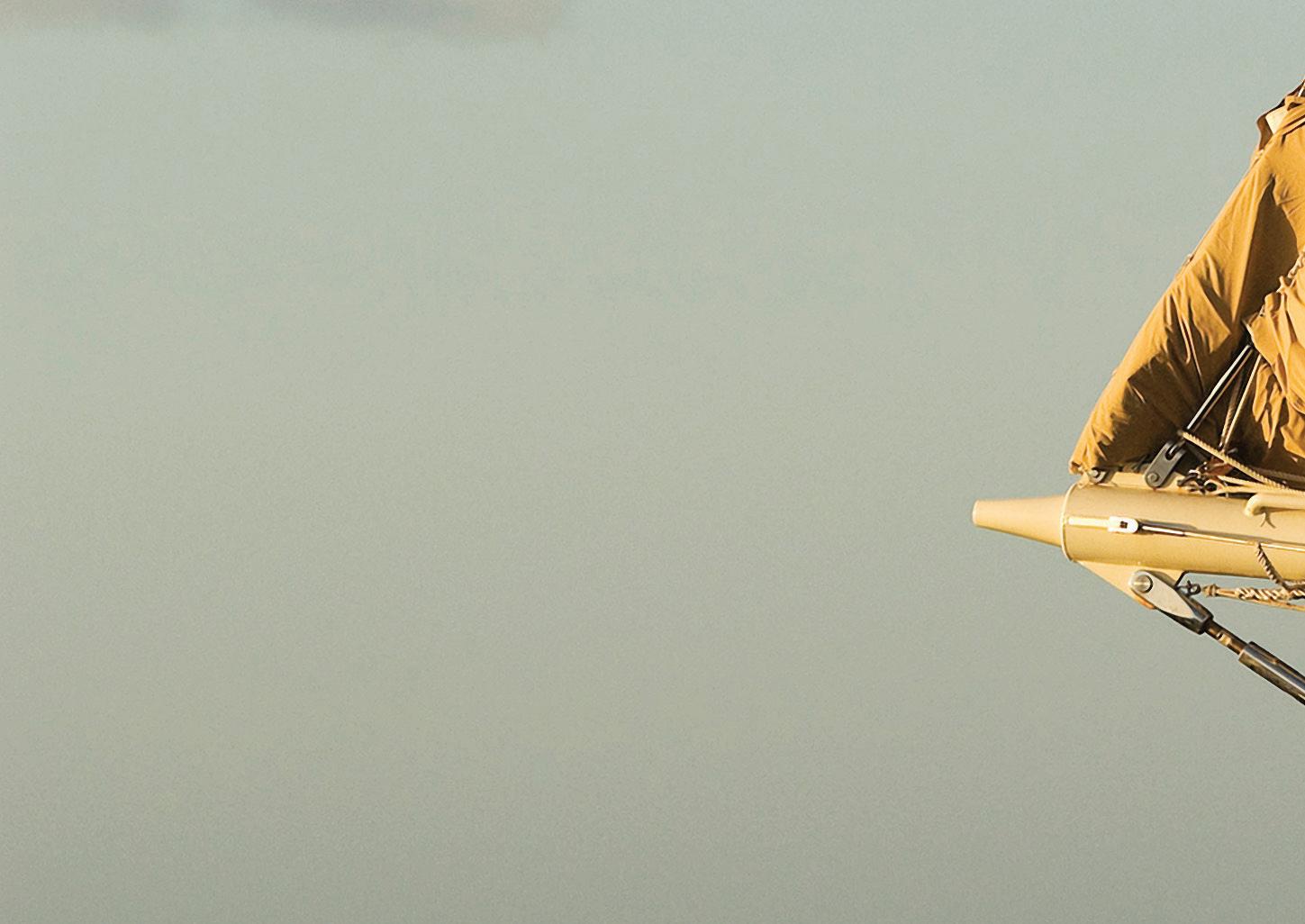
LEARN MORE ABOUT OUR VESSELS ONLINE AT WWW.SEAMESTER.COM
Circumnavigating the Globe
Both Vela and Argo are 112-ft two-masted staysail schooners built to comfortably accommodate 26 students and seven professional staff on the most challenging of ocean voyages. Certified by the British Maritime and Coastguard Agency as Category “Zero” vessels, they are allowed unrestricted operation in all of the world’s oceans.
Safe, capable, and as splendid a sailing yacht as there is traversing the seas; Vela and Argo are designed to the most exacting of standards in collaboration with the renowned Newport Rhode Island firm, Langan Design Associates.
Sailing the Caribbean Archipelago
A classic two-masted schooner that ably accommodates 16 students and four professional staff, Ocean Star was launched in 1991 and has been maintained and updated throughout the years. Ocean Star is 88 feet overall and, like her sister ships, is inspected and certified by the British Maritime and Coastguard Agency.
Over 1000 students have had the good fortune to live, study and sail the Caribbean Archipelago since Ocean Star first set sail under the Sea|mester flag.


THE CARIBBEAN & LESSER ANTILLES
MEDITERRANEAN & ATLANTIC OCEAN
PACIFIC OCEAN & POLYNESIA
AUSTRALIA & INDONESIA
ASIA, INDIAN OCEAN & SOUTH AFRICA

Study species diversity on the islands of the Galapagos or visit an aboriginal community in Australia’s Tiwi Islands. Hike to the boiling lake in Dominica or dive the coral reefs of Fiji.
As the only sailing-based academic program that circumnavigates the globe, Sea|mester offers you the opportunity to explore those places that most intrigue you and study those subjects that most interest you. Whatever your planned career course, Sea|mester promises a life-changing adventure.
Where do you want to go?

PACIFIC OCEAN
TAHITI & FRENCH POLYNESIA
ATLANTIC OCEAN
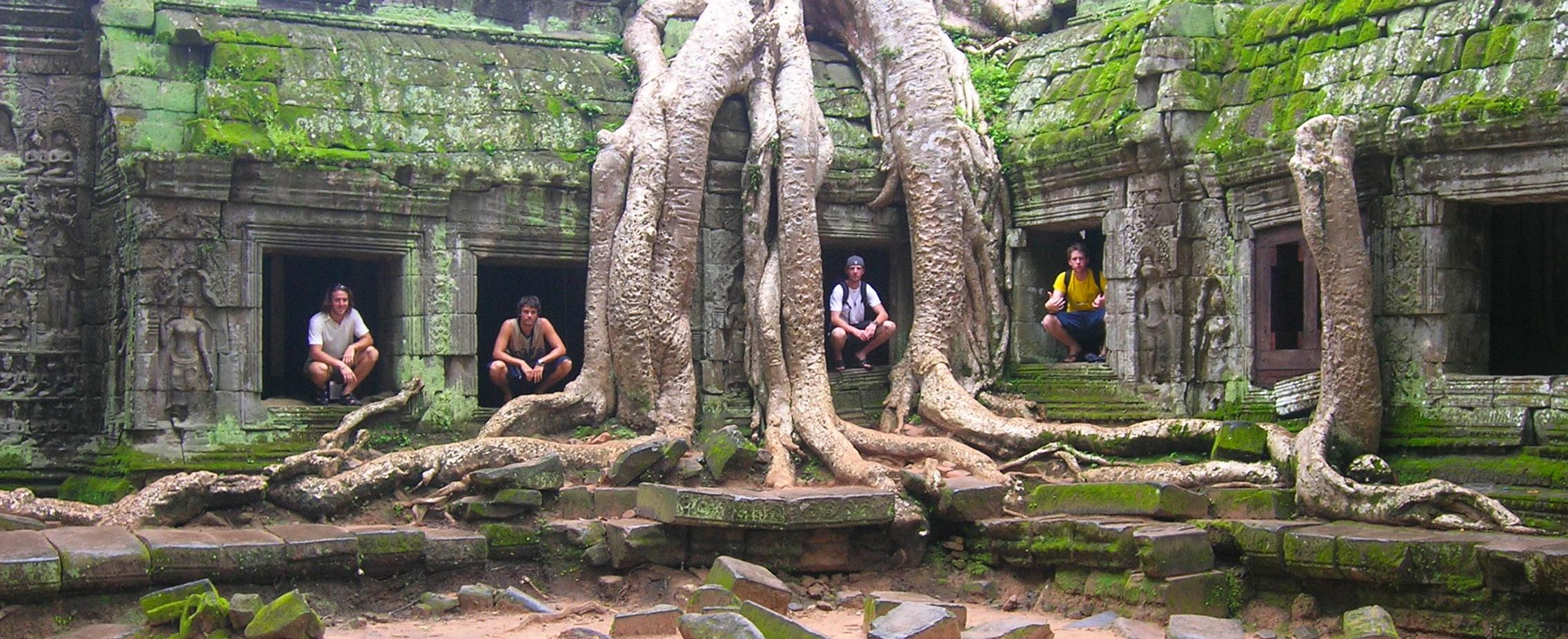

SEA|MESTER OFFERS 4 CARIBBEAN VOYAGES PER YEAR: AN 80-DAY SEMESTER EVERY FALL AND SPRING, AS WELL AS A SHORTER 20-DAY AND 40-DAY EXPERIENCE DURING THE SUMMER. WWW.SEAMESTER.COM HAS ALL THE DETAILS.
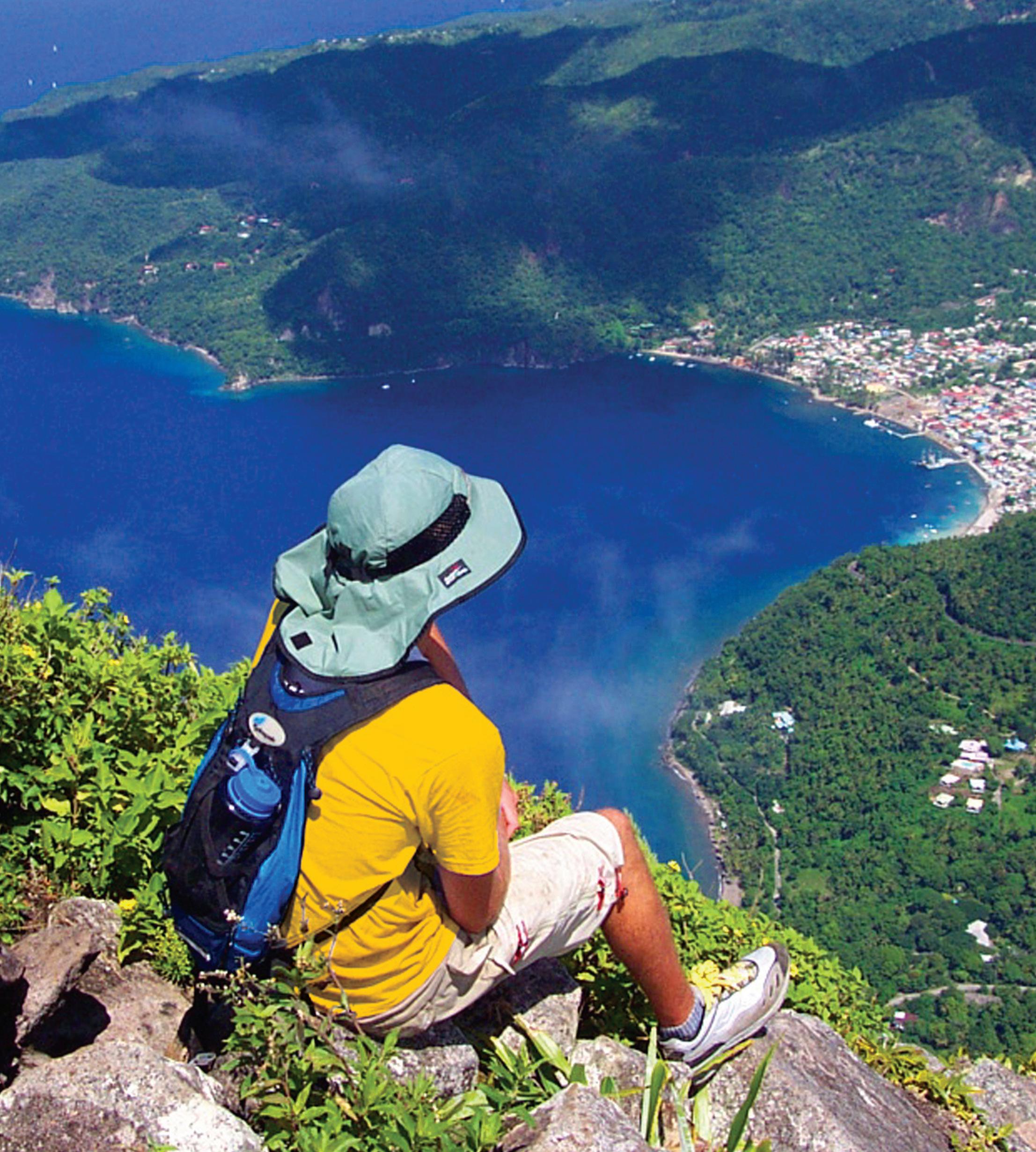
The crystal blue waters of the Caribbean and the abundant beauty of the Lesser Antilles have long proved an irresistible lure to sailors and explorers. At one time or another, virtually every European country has tried to lay claim to some part of the 700 islands that make up this paradise, which explains why languages, customs, and currencies change as often as the topography. Indeed, because it hosts ecosystems that range from cloud forests to cactus scrublands, Conservation International has classified it as a biodiversity hotspot.
You’ll have the opportunity to dive the renowned reef systems, hike the volcanic mountains and explore the communities as part of any Sea|mester voyage that sails throughout this extraordinary part of the world.
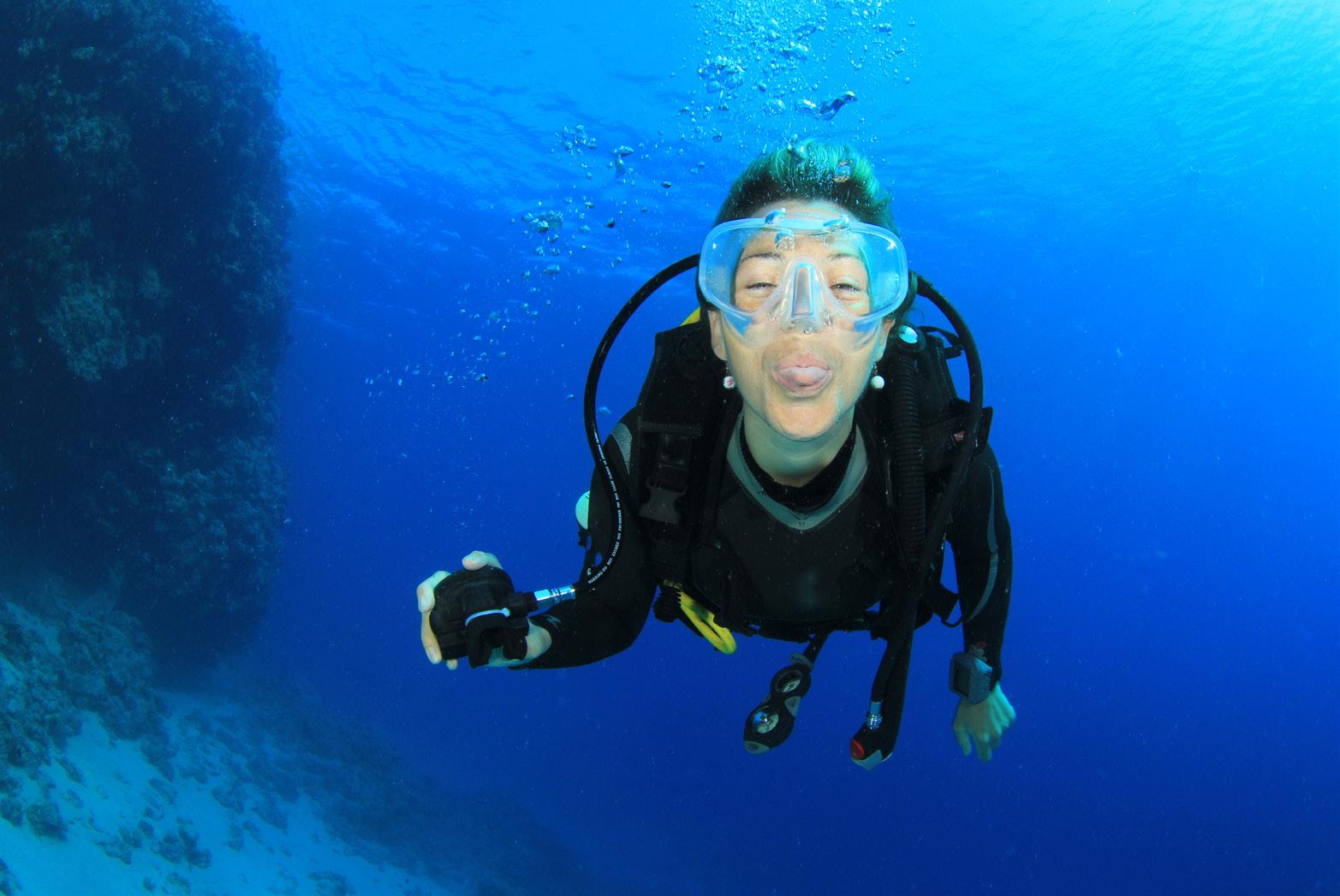


PUERTO RICO BRITISH VIRGIN ISLANDS
"The hike began peacefully enough; a walk through paths lined with cinnamon and banana trees. Before long, the rainforest beckoned. We entered, surrounded by huge, green leaves and exotic birds. The beauty made it easy to forget about what awaited us, but that feeling was short lived. As the forest began to thin, the pounding of whitewater could be heard through the trees. We drew nearer, and the thundering grew louder. Before long, we were face to face with the reason we came: a massive, churning, 40-ft waterfall. David, our guide, led off, jumping as calmly as if he were stepping out his front door. Paul was next, followed by Chris, and then myself. Hands shaking, I took the plunge. It was the best decision I’d ever made."
From a trip log by Dan K., Tulane University, writing from Grenada
Retrace Darwin’s steps in the living laboratory of the Galapagos and explore the lush rainforests and volcanic sea caves of the Marquesas. This 6000-mile sailing adventure takes you from the Caribbean, through the Panama Canal, and across the Pacific, where the ocean’s gentle trade winds will lead you to the islands of French Polynesia: Bora Bora, Raiatea, Huahine, and Tahiti.
Then, after stops in Fiji and Rarotonga to take in the local culture, it’s on to Australia and Indonesia and the glories of world-class sailing, snorkeling, and scuba diving at some of the world’s most pristine coral reef ecosystem, the Great Barrier Reef.


"While in the Galápagos the crew of Argo headed out to Los Lobos Island, the Island of the Sea Lions. From the boat I could see dark forms lounging on the rocks and I decided to swim to them. Suddenly a dark streak came shooting past me. My breath caught and I gasped, but I laughed when I realized I was being surrounded by sea lions that had come to play. As they somersaulted and spun underwater, I tried to mimic their movements and they seemed to love it. It made me dizzy just to watch them. The more we interacted the more comfortable they became, coming within inches of my mask. I could see into their large gentle eyes. Suddenly a terrified bark came echoing through the water. I quickly realized a large male was letting me know I had entered his territory. I turned and swam back to the coast, reflecting on the beauty of these majestic animals and how lucky I’d been to swim with them."
From a trip log by Samantha D., Eckerd College, writing from the Galapagos

"There was a big festival in town called the Santa Tecla which has been going on since Roman times. The main event is the Castelleros. Everyone, even the children, compete to build crazy towers of human bodies. I’d been chosen to join one and was soon at the bottom, a buttress of support. People began climbing on our shoulders to build the pyramid. Finally, a young girl no more than six or seven was climbing up on the backs of the six levels above me, trying to reach the top. It was one body too much. We started to sway dramatically. Suddenly the tower was coming down and bodies were falling everywhere! The young girl came hurtling earthward, and sent me flying backwards. When the chaos subsided and I composed myself, I realized though my heart was beating a hundred times a second I was smiling from ear to ear. Nothing needed to be said. It had just been an unbelievable experience." (Note from the student editor: the little girl was fine!)
From a trip log by Philip O., University of Colorado, writing from Spain
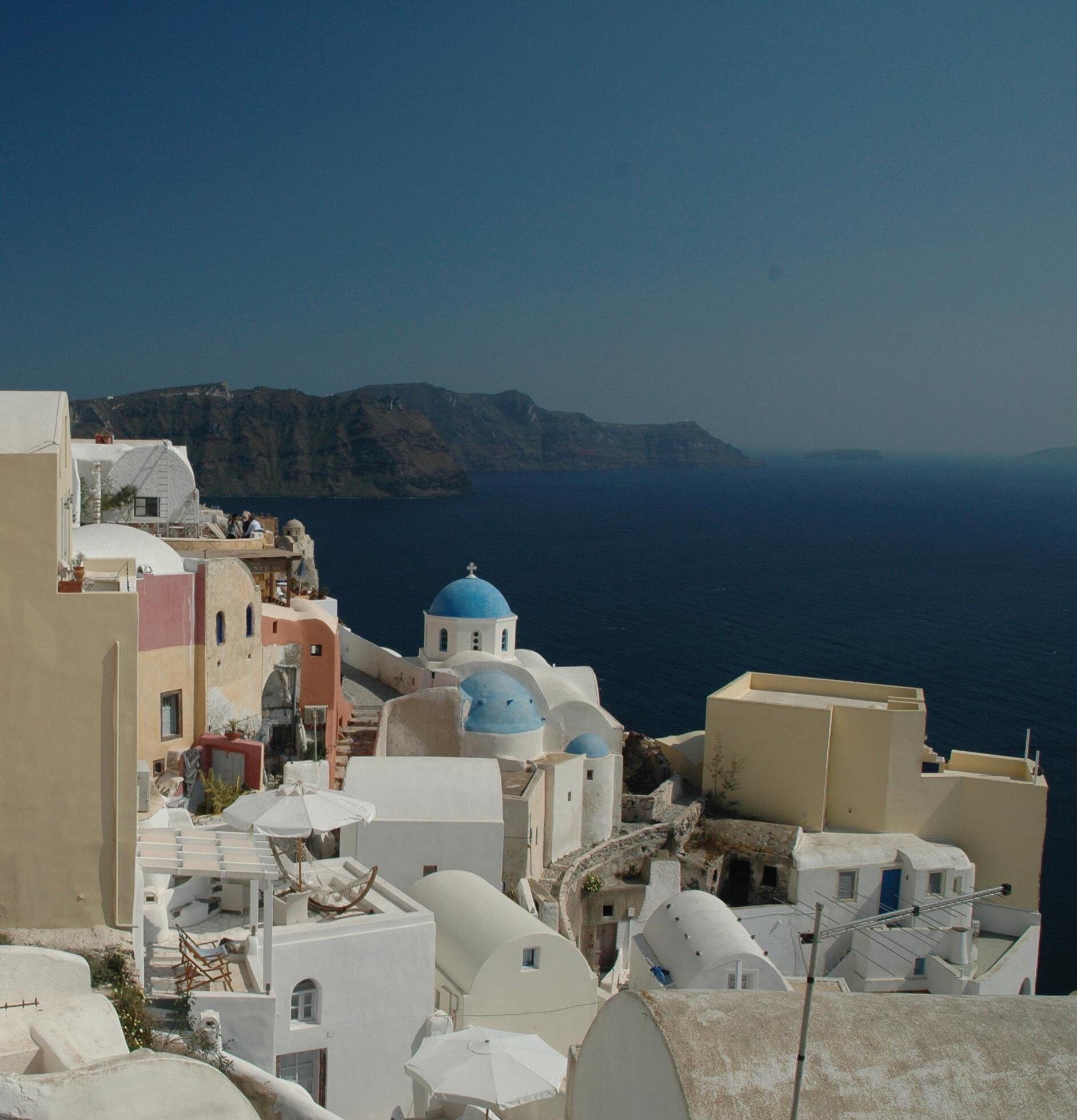
The legends of the Mediterranean come alive on Sea|mester’s voyages across these fabled waters. Follow Ulysses’ odyssey across the Aegean, climb the steps Caesar did on his path to betrayal, and hike to the site of Napoleon’s exile on Elba. See where Nelson escaped the French on the Costa Smeralda as he made his way to the battle of Trafalgar.
Follow in Columbus’ wake across the Atlantic from Spain, with stops along the way at Gibraltar, Morocco, and the Canary Islands before heading to the Caribbean to complete your academics, sail training, and scuba certifications. Then it’s on to your final destination, the island of Antigua. It’s a blue-water sailing adventure that promises to be a life-changing test of character.

Captain Cook came nearly 250 years ago on HMS Endeavour with an army of scientists and introduced the Great Barrier Reef to the world. Now you can explore the only living organism on earth visible from space, Australia’s Great Barrier Reef, aboard Sea|mester’s Vela or Argo. Home to more than 30 species of whales, dolphins and porpoises, six species of turtles, 215 species of birds and 1500 species of fish, there is no better place than the largest coral reef system in the world to study oceanography, marine biology and, of course, to learn to scuba dive.
Then this 4000-mile sea voyage continues north to the more than 1750 islands that make up the world’s largest archipelago, Indonesia. Scattered across both sides of the equator and supporting the second highest level of biodiversity on earth, the islands offer a stunning array not only of flora and fauna, but of cultures as well. Then it’s on to Thailand, with stops along the way to explore Singapore and Malaysia.
"Anticipation and excitement had been building for days; I half expected to be greeted by half-naked Tiwi Aboriginals brandishing drums and spears when we got ashore. But the island is simple, full of culture and smiles. Our first stop was a small museum filled to the brim with history. There were tons of cool facts and pictures covering the walls, like old fighting sticks, photos of dance rituals, and random stories like the one about the Aborigine who had a heart attack the first time he saw a car. Each Aboriginal is given an animal nickname, and each animal name comes with a specific face-paint pattern. These names are passed down from generation to generation on the father’s side. We were all given good spirits by being rubbed with a certain bush, which also got rid of all the bad spirits we brought from the Australian mainland. If the day wasn’t already full enough, the night ended with a huge lightning storm off in the distance that was more spectacular than any fireworks show I’ve ever seen!"
From a trip log by Aaron F., Gap Year Student, writing from the Tiwi Islands, Australia
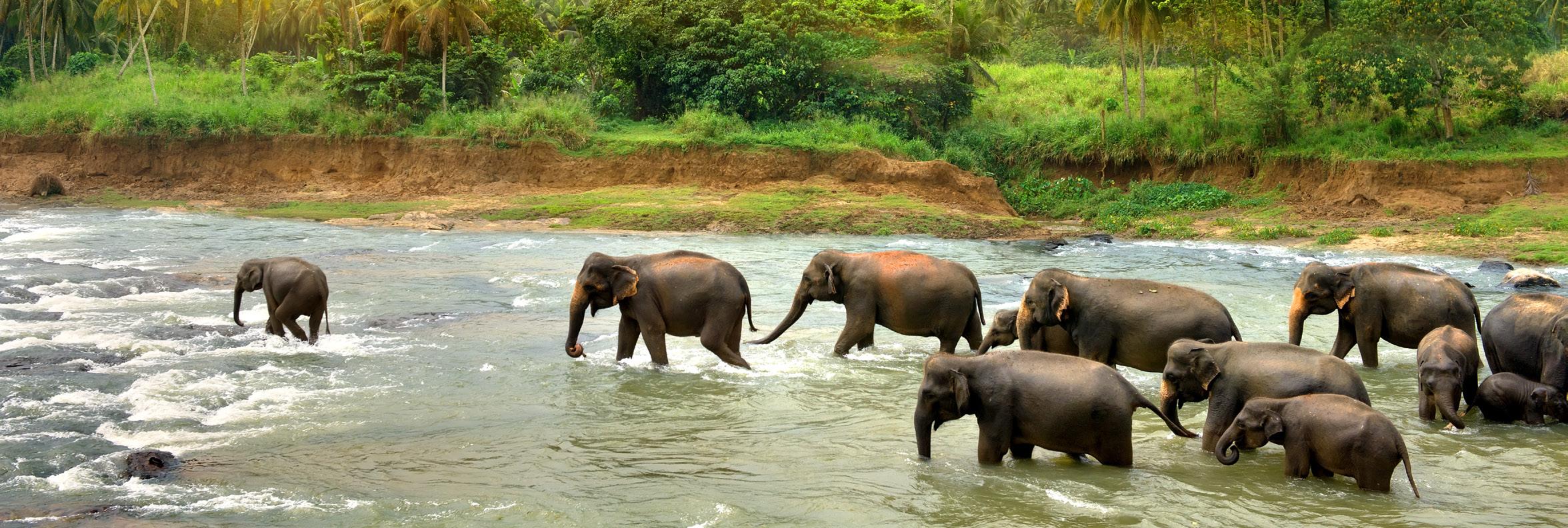


HUMPBACKS ARE WELL KNOWN FOR BREACHING AND THEIR COMPLEX SONGS. THEIR NAME IS TAKEN FROM THE MOTION THEY MAKE WHEN ARCHING THEIR BACKS OUT OF THE WATER IN PREPARATION FOR A DIVE. AN AVERAGE HUMPBACK WILL EAT 5000 POUNDS OF PLANKTON, KRILL AND SMALL SCHOOLING FISH EACH DAY AND CAN LIVE FOR 45-50 YEARS.


Witness elephants walking the busy city streets of Bangkok, dive and explore the coral reefs of the Maldive Islands, experience the incredible biodiversity of Borneo, and marvel at the epic views from Table Mountain on this unforgettable journey that spans an extraordinary mix of cultures and more than 6000 nautical miles. It takes you from Bali across the Indian Ocean – bounded to the north by Asia and the Indian subcontinent, the east by Australia and Indochina, the south by Antarctica toward Africa, and to the final destination of Cape Town.
"The last stop of a tour of Phi Phi Le Island in Thailand sticks in my mind. It was a small beach and very ordinary except for the large monkey population that inhabited it. There were baby monkeys clinging to their mothers, large males and rowdy youngsters. Boomer, our captain, knelt down and let a monkey sip from his water bottle. It was amazing to watch these animals up close and to see how unafraid of humans they’d become; they’d even wash sandy food in the water and run away from the surf. So it was much to the dismay of the group that we finally had to leave. It had been a great day topped off by a once in a lifetime encounter."
From a trip log by Evan I., Miami University, writing from Thailand

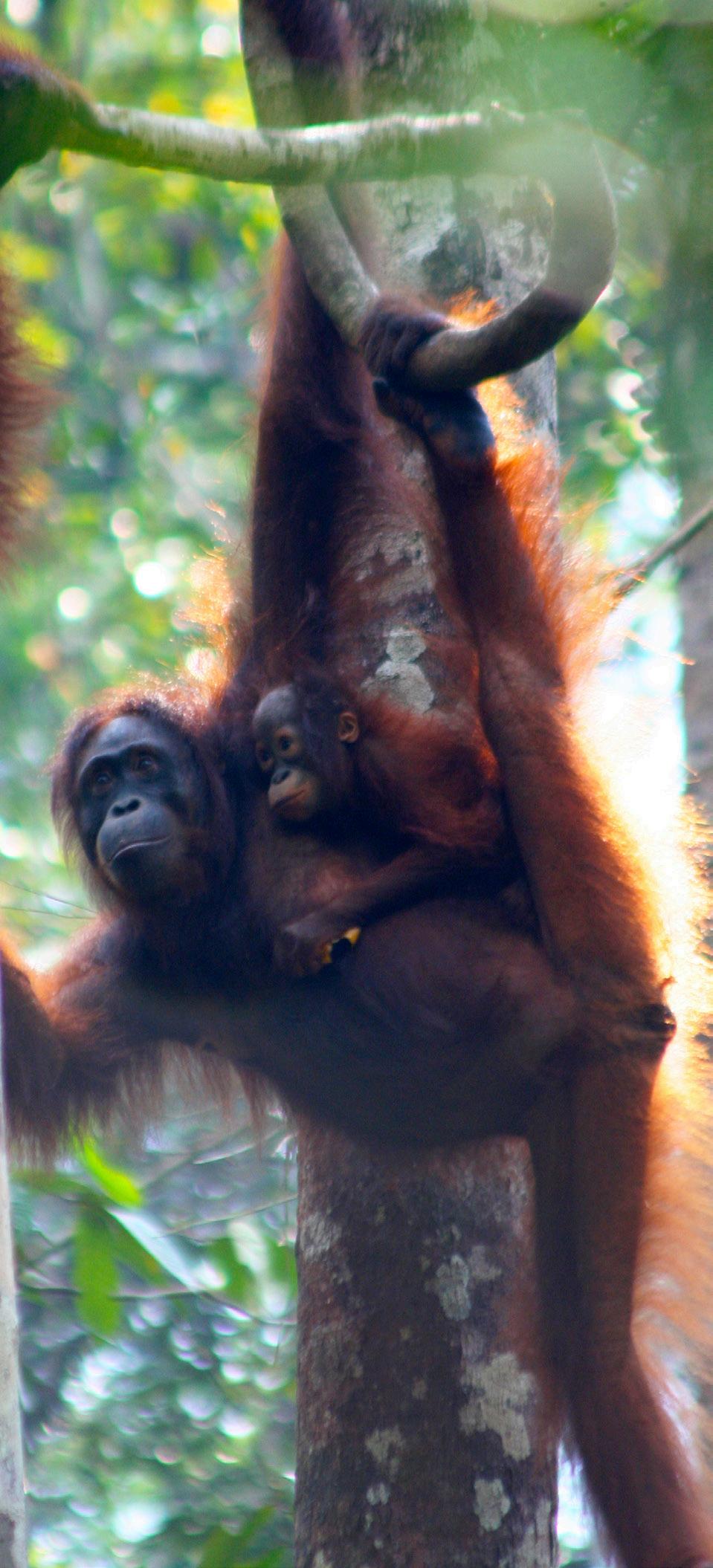

ABOARD ARGO & VELA WE TYPICALLY MAKE ABOUT 300 GALLONS OF FRESH WATER PER DAY USING OUR REVERSE OSMOSIS SYSTEM. SOUNDS LIKE A LOT? IN THE US AN AVERAGE PERSON USES 80 GALLONS PER DAY SO WITH 30 PEOPLE ABOARD WE SOON LEARN TO CONSERVE!

"At first, living On-board Argo was like living on another planet. We stared blankly if one of the staff members asked us to wax the gunwales or sheet in the main. But every day the crew becomes more comfortable and more self sufficient, and Argo is turning into home. None of us knows what lies ahead, but it is sure to become the experience of a lifetime."
Rebecca G., Western State
No one speaks more eloquently about Sea|mester than those who have participated in the program. We hope in reading about life on-board, you gain a real sense of what adventures await you, of the experiences you’ll share with your crewmates, and how the power of those experiences will help to create a bond shared between you that will last a lifetime. No matter what future you envision for yourself, whether it is something related to the sea or something quite far afield, Sea|mester will broaden both your geographical and personal horizons in the deepest, most meaningful of ways.
Your first week or so on-board, you learn the basics of sailing and of operating the vessel. You have your first lectures in your academic courses. You begin to understand that everyone shares responsibilities for everything from planning itineraries and provisioning to cooking and cleaning. There are no passengers on this voyage; on-board everyone is a part of the crew and must be a sail, not an anchor if the voyage is to succeed. As the first close working relationships develop, your support for one another, your confidence in yourself, and your enthusiasm grows.
"When it comes to sharing responsibilities aboard, the ‘Job Wheel’ plays a monumental role. The wheel has everyone’s name listed on it with the responsibilities listed around it. Everyday it rotates and whatever job corresponds to the crewmember’s name is his or her duty for the day. One day you may be a Deckie and the next the Skipper. Responsibilities aboard find a way of balancing themselves out among the crew and with every new turn of the wheel comes another duty. And in the end, every Deckie has his or her day!"
Desiree T., Gap Year Student

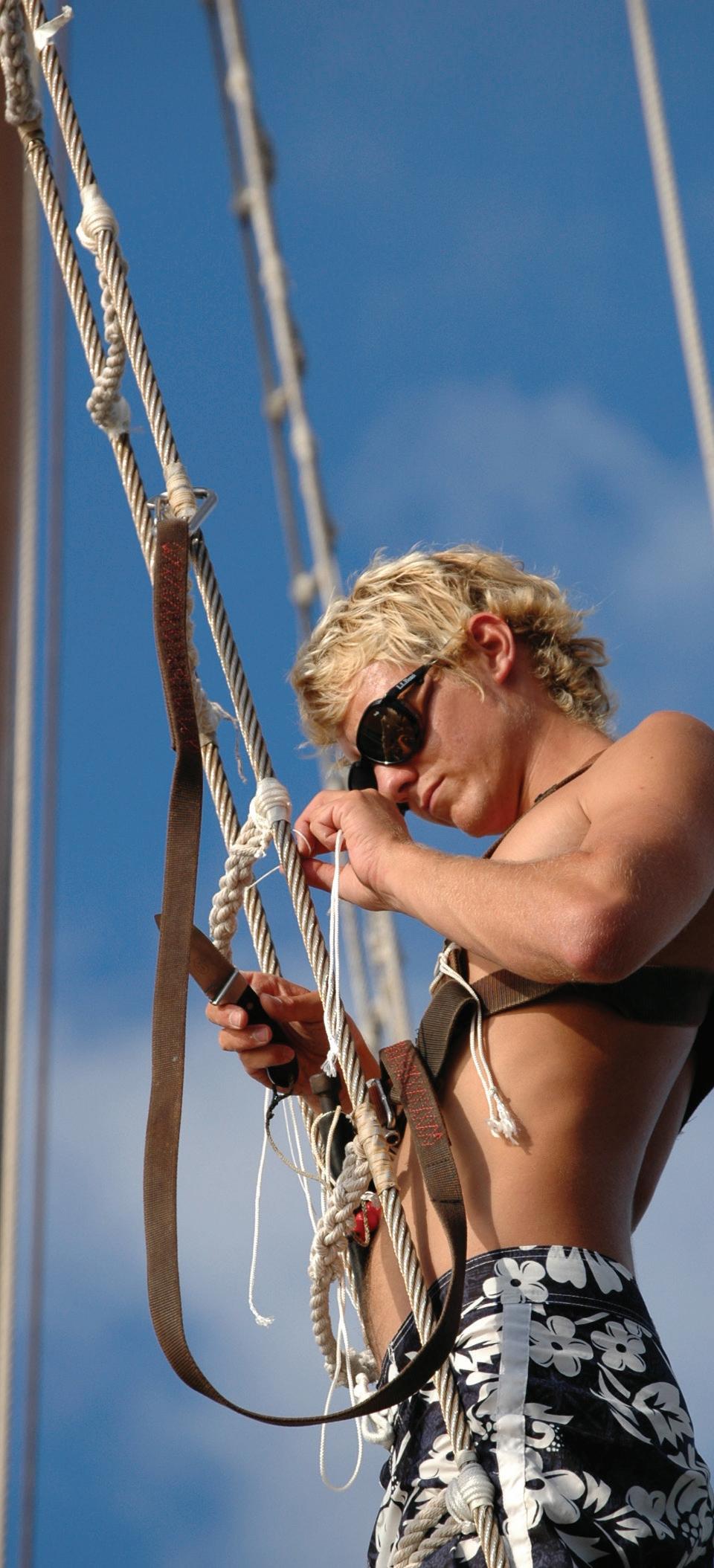
There is no typical day aboard ship. Some days involve exploring an island, contributing to a service project, performing research, diving, or hiking. Whatever your day brings, with it comes new challenges and discoveries about the world around you and yourself. As the days pass, your view of the world and yourself change.
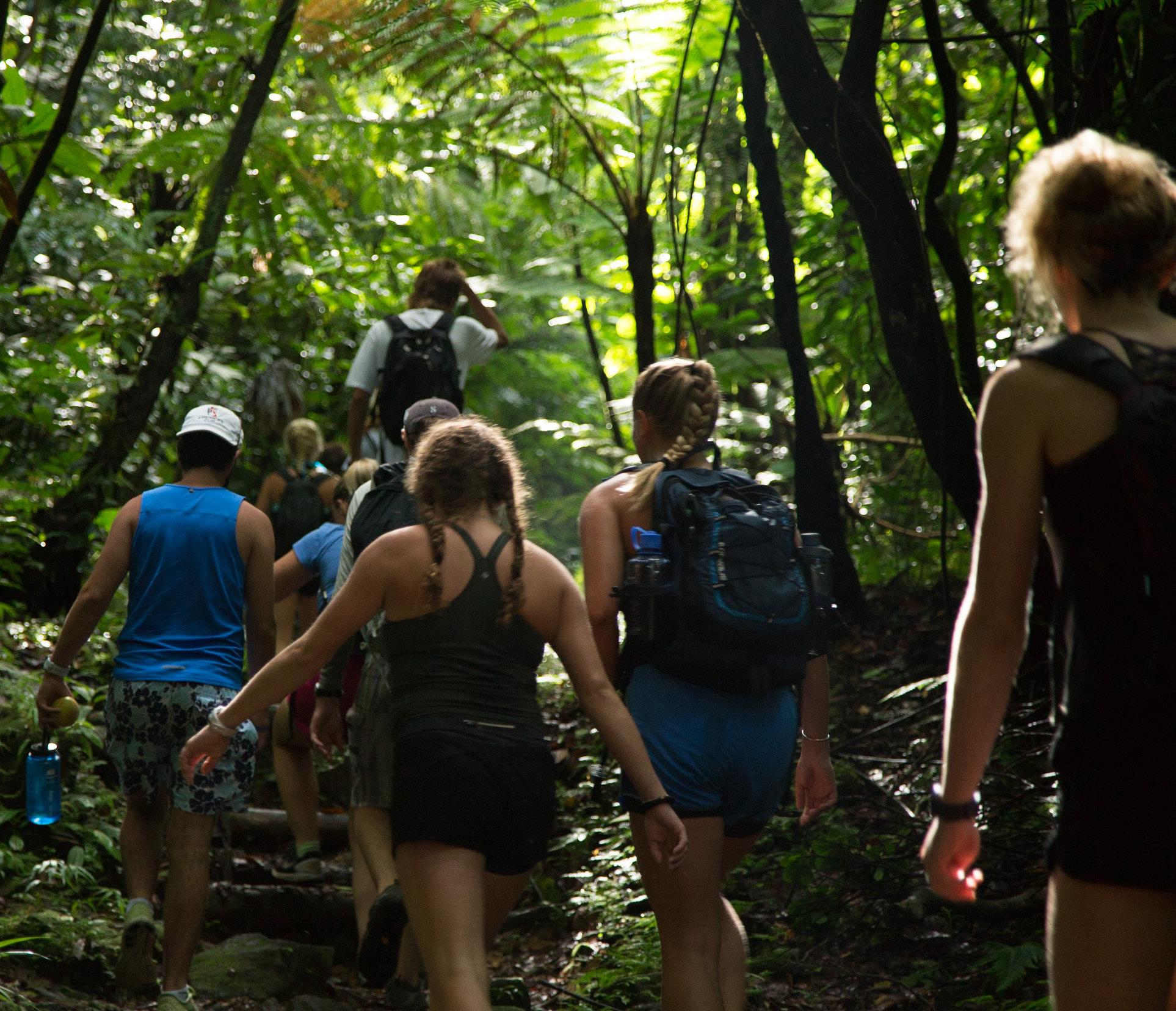
"What is a typical day on Argo, when every day is an adventure in itself?
Most young adults join the world of the living around 10am or later, not realizing the amount of things that can be accomplished earlier. On-board, by the time the rooster cries, every member of our 29-person crew may have hopped in a dinghy for a ride to shore and already hiked halfway up a mountain. Fifteen people may have gone swimming with sea horses, turtles and frogfish for 60 minutes and are now enjoying their surface interval before submerging to 60 feet again. These are the kind of mornings Argo and her crew likes to enjoy."
Leah
S., Mary Washington College
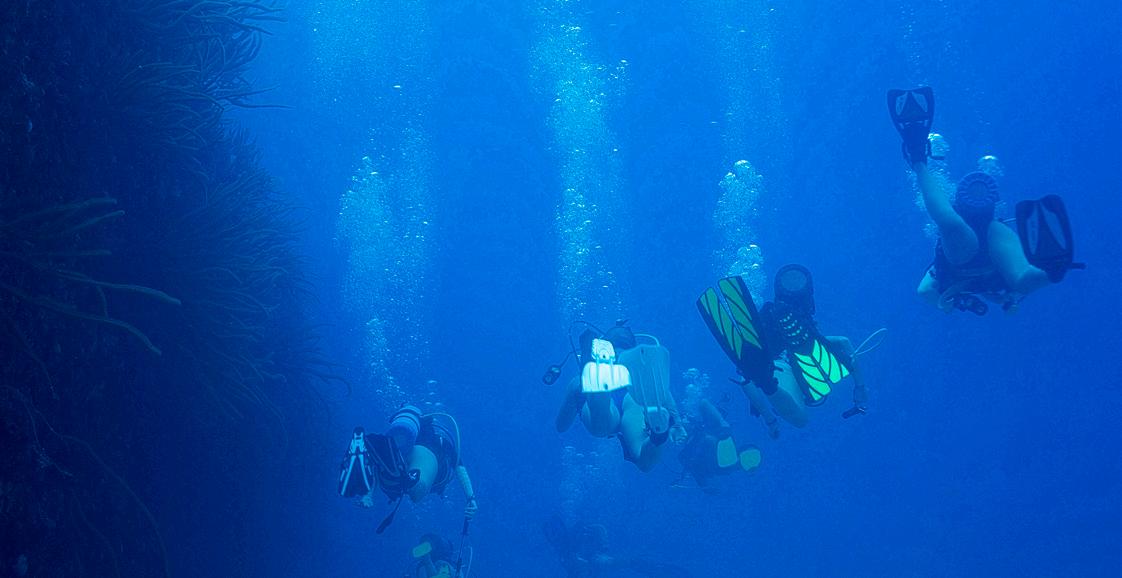
Life on-board is undoubtedly different from life onshore. Many discover the challenges allow them, for the first time in their lives, to move outside their comfort zone, where they have enormous opportunities to grow and realize the boundlessness of their potential.
"Life aboard with Sea|mester is very different for me. Before this trip, I had friends and family constantly surrounding me; my own room, Internet access, a newspaper and a closet full of clothing. Now I have a new set of friends whose backgrounds span the world, a bunk, a cubby, and a uniform of bare feet and bathing suits.
I haven’t talked to my family in a week, classes are enjoyable and my school has sails attached to it! It’s not that I feel limited by this new life; in fact, I find it incredibly refreshing. I’m genuinely enjoying not having things from my world. I’ve come to realize, in only a few short days, how unnecessary some are. These proposed ‘limitations’ are actually assisting our group to bond. Cooking together, hanging out at night and doing all the same assignments have encouraged the realization that these people are not just classmates; each is going through this journey with me."
Drew H., Rollins College

ARGO’S CROSSING INTO THE SOUTHERN HEMISPHERE COMMEMORATES THE CREW’S FIRST TIME CROSSING THE EQUATOR. IN CELEBRATION, THE CREW PARTICIPATES IN THE NAUTICAL TRADITION OF THE EQUATORIAL BAPTISM, WHEN THE POLLYWOGS (SAILORS WHO HAVE NEVER CROSSED THE

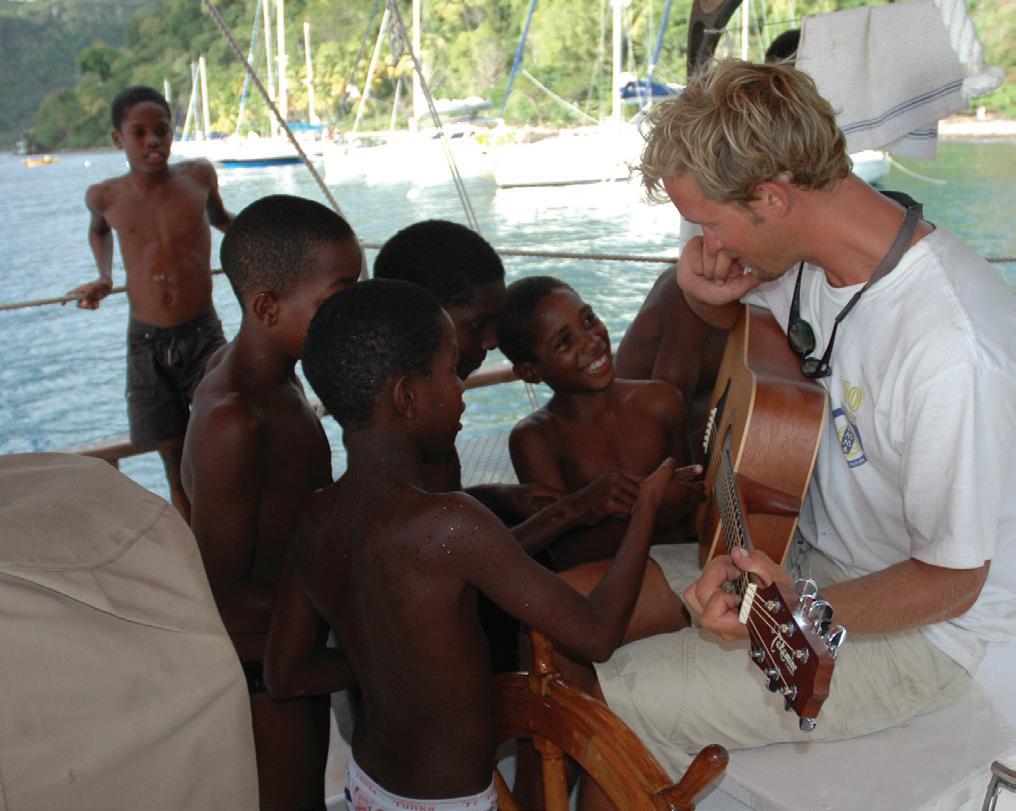

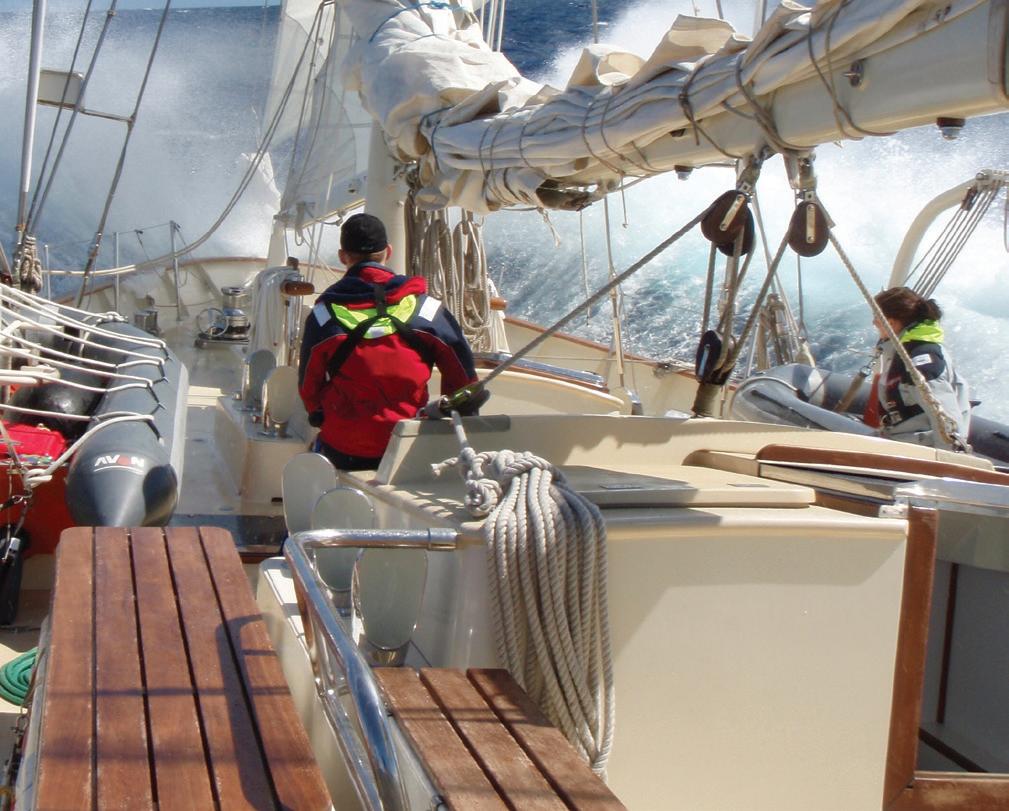
"After a long day in the sun, nothing feels better than a Sea|mester shower. When this delightful time of day comes around, usually between 3-5pm, we all gather on deck, ‘product’ (soap, shampoo etc.) in hand, sporting a bathing suit or board shorts, ready for a refreshing jump off the vessel’s starboard side. After the first dive, we climb back up and lather up on deck. Once shampooed and fully scrubbed down with a few squirts of Dial body wash, its time for the final salt water submersion before a cool freshwater rinse off via the deck hose. When we first arrived, Dan told us that by the end of the voyage students actually prefer the Sea|mester method of bathing over a normal shower or bath. At first I was skeptical but I think he might just be right."
Jacqueline G., Gap Year Student

"You get a real sense of pride knowing you’re helping provide food for your fellow shipmates and having an awesome time doing it. My provisioning experience started with a long ride through Antigua. In theory it’s pretty simple. We decide on our meals for the week, we write down what we need and we go and get it. But we’re in the Caribbean and that mixes things up a bit. Some things are hard to find, but that’s what makes it so much fun.
The best thing was checking out and the look on the cashier’s face when she saw the sheer amount of groceries we got. Shopping for a family of four can be fun but shopping for a family of 18…!"
Henry R., Gap Year Student
"If you live on a boat, you know you’re going to be wet. We’ve accepted this and anticipate a little wetness from time to time: we’re surrounded by water, we don’t even flinch at sea spray and we tread carefully so as not to slip on deck. Most of the time the sun is shining and getting wet happens when we shower. All that has changed due to a few recent squalls: Ocean Star has become a wet and wild world. Some storms sprinkle us for a time while others dump buckets, covering up the cries of “Close the hatches!” The rain jacket has become the fashion statement of the voyage. I prefer a bright, screaming yellow to offset my wet brown hair!"
Drew H., Rollins College


"During watches there is much bonding going on between watch team members. Long hours in the middle of the night are spent in conversations meant to pass the time.
Sailing at night is definitely an experience unlike any other. With nothing to light our way other than the moon and the millions of stars most of us suburban kids never even knew existed, we now strike and raise sails basically with our eyes closed, and we do it well. When on bow watch we frequently see dolphins, outlined in the dark waters by bioluminescence. For most of us, it is the most amazing sight we have ever seen."
Annie H., Fordham University
"Our first night in the Tobago Cays consisted of a night dive… To see the reef in the dark was definitely a change. We were able to see the nightlife on the reef and we even saw a few new animals. An octopus, snake eels, and lobsters were the highlights of our dive. Those who dared to turn off their flashlights were immediately bitten by hundreds of curious little fish that couldn’t harm us at all."
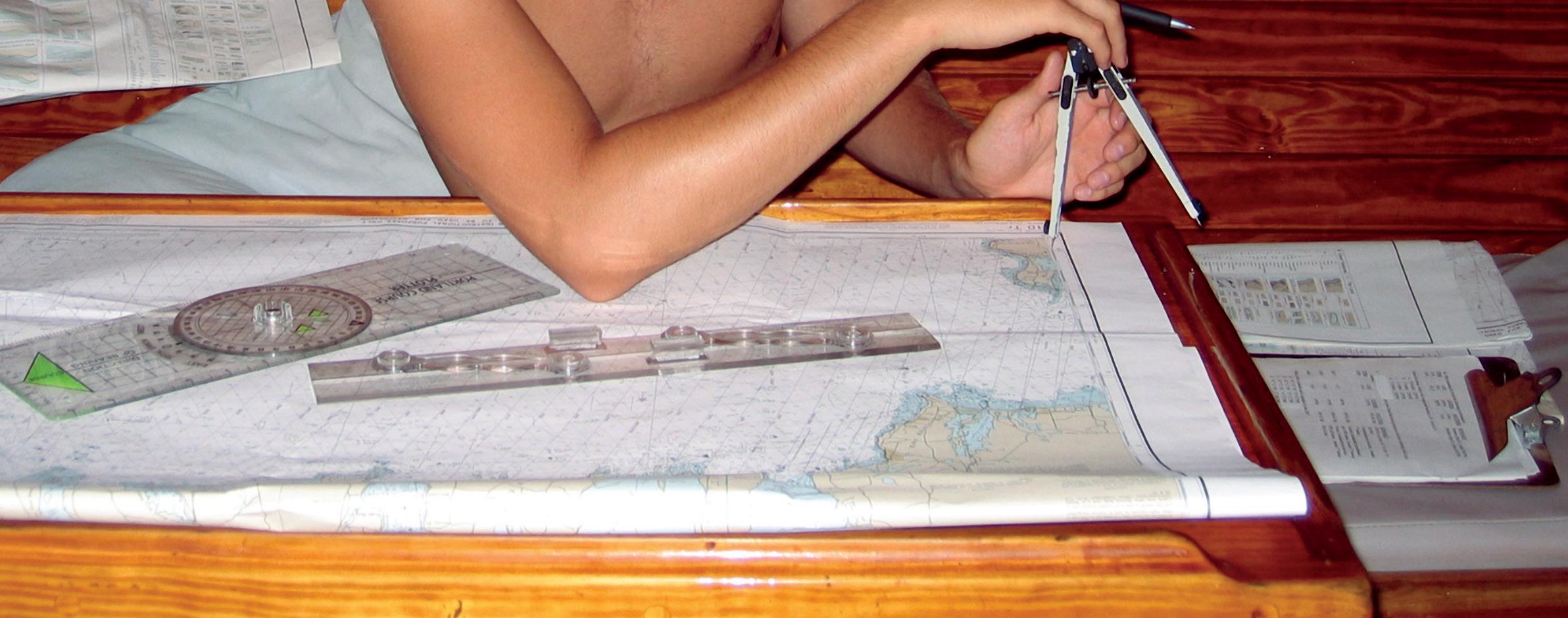
"Life on passage is something that is hard to translate to those who have never experienced it. First, don’t ask me to tell you what the date is, much less the day of the week, or even the difference between yesterday, today and tomorrow. Your life is no longer divided into days but into watch schedules, on for three hours and off for six. Once you lose track of the days and the time, you know you’re in for the long haul. After a little over a week of this new lifestyle, most of us felt as if we could continue on for months.
Few people can say that they have crossed an ocean, much less aboard a 112-ft sailing vessel. The twenty-five of us aboard Argo can now proudly say that we have accomplished just that. And I feel that I could have kept sailing until we reached the edge of the earth."
Annie H., Fordham University


DURING OUR CIRCUMNAVIGATION THE LONGEST PERIOD OF TIME THAT WE SPEND OUT OF SIGHT OF LAND IS 21 DAYS AS WE MAKE PASSAGE ACROSS THE PACIFIC OCEAN BETWEEN THE GALAPAGOS AND THE MARQUESAS.
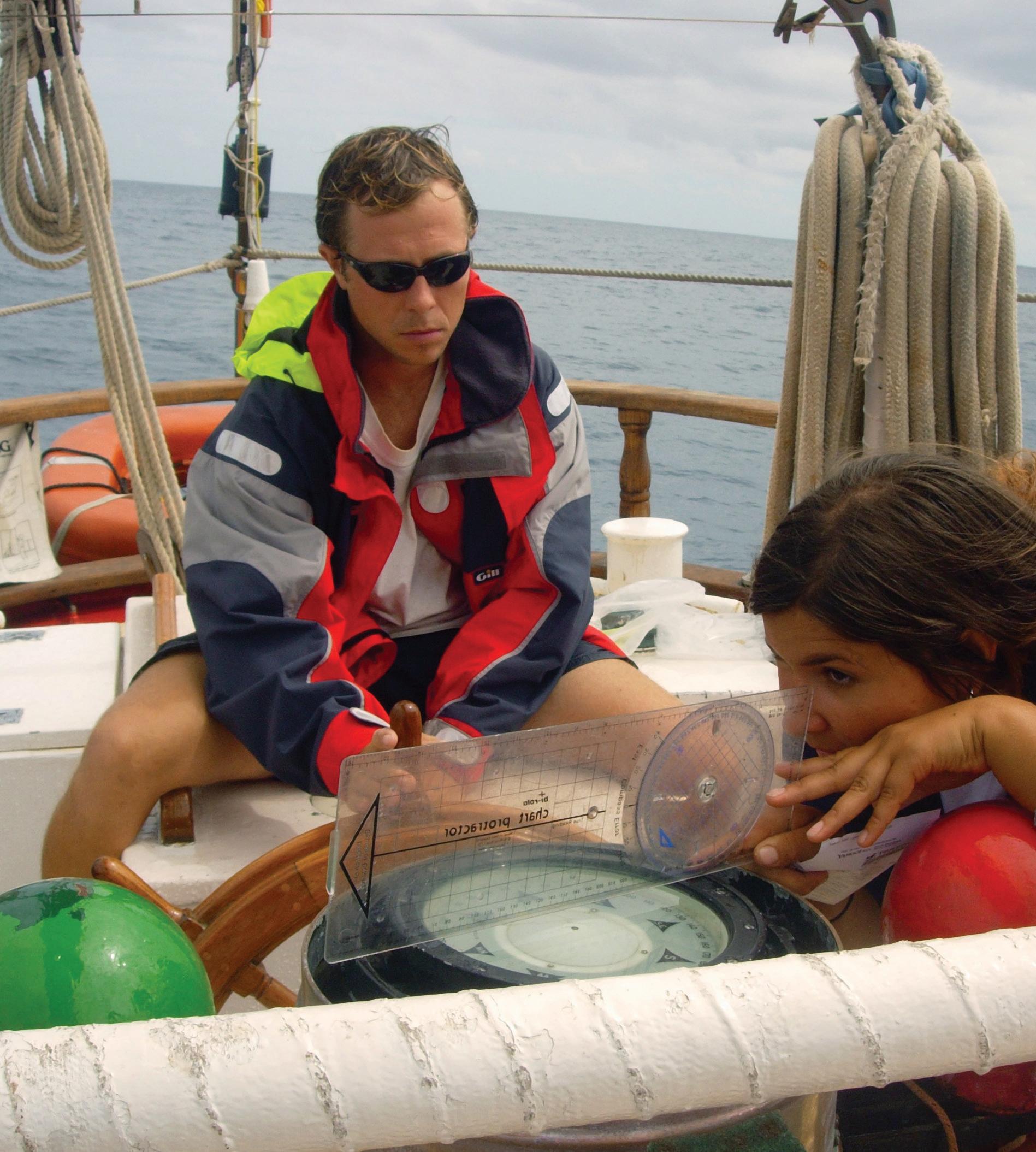
Academics are an integral part of every voyage; Sea|mester is, after all, an educational experience at its core. Learning aboard a ship happens in a way it never does in a traditional classroom. Here, you discover that just as the conventional walls of a classroom don’t exist, there is no bell to signal the start or end of learning. The voyage offers endless teachable moments, and they happen at all hours.
For Deborah Moroney, a former Chief Scientist, a teachable moment occurred when Ocean Star sailed by Montserrat at 2 am while the island’s volcano erupted, pouring lava down the mountain. It provided Moroney with the ideal opportunity for a lesson in the volcanic formation of most Caribbean islands.

Chief Scientist Jessica Fry says it’s:
Learning the oceanographic processes responsible for the trade winds and sailing 1000 nautical miles using them.
Coming on deck in the morning to find a small squid that had misjudged its leap out the water, then holding a dissection class to discover the pen and ink inside.
Being hit in the face with a flying fish on bow watch, then examining its pectoral fins.
Learning in class about coral reefs, mangroves, sea grasses and invertebrates, then scuba diving to see it all firsthand.
What do you do when a whale breaches?
According to Chief Scientist Chantale Begin, "It depends on the group at that moment. Sometimes students have so many questions, and the questions are brilliant, and everyone is so excited. And then there are other times you just shut up and let them enjoy the experience and wait until the next day to talk about marine mammals."
Chantale also sees the opportunities for teachable moments in tying a lesson to the operation of the boat.
"We’ll say, ‘let’s go scrub the hull so we’ll be faster on our way to Australia and we can’t bring invasive species into Australian waters.’ We can talk about native species and invasive species and tie it all together with the preparation of the boat for the voyage and perform a higher ecological mission. It’s that kind of thing that sets Sea|mester apart."

45 SECONDS IS BELIEVED TO BE THE LONGEST FLIGHT BY A SPECIMEN OF THIS FAMILY. THE RECORD WAS SET IN JAPAN IN MAY 2008. THE FISH WAS ABLE TO STAY ALOFT BY BEATING THE SURFACE OF THE WATER WITH ITS CAUDAL FIN.
Marine Science Instructor Kirsty Nash explains the teachable moment this way, "I guess the first thing that springs to mind is trying to teach abstract topics such as reef formation and the development of fringing reefs, barrier reefs, and atolls. Normally in a classroom, it is hard to relay the sense of scale and the reality of what this looks like. It comes across as an abstract construct. Then you hike to the top of Lizard Island and before you are fringing reefs in the waters surrounding the island and in the distance the ribbon reefs of the Great Barrier Reef stretching into the distance, a clear line marking the edge of the continental shelf."
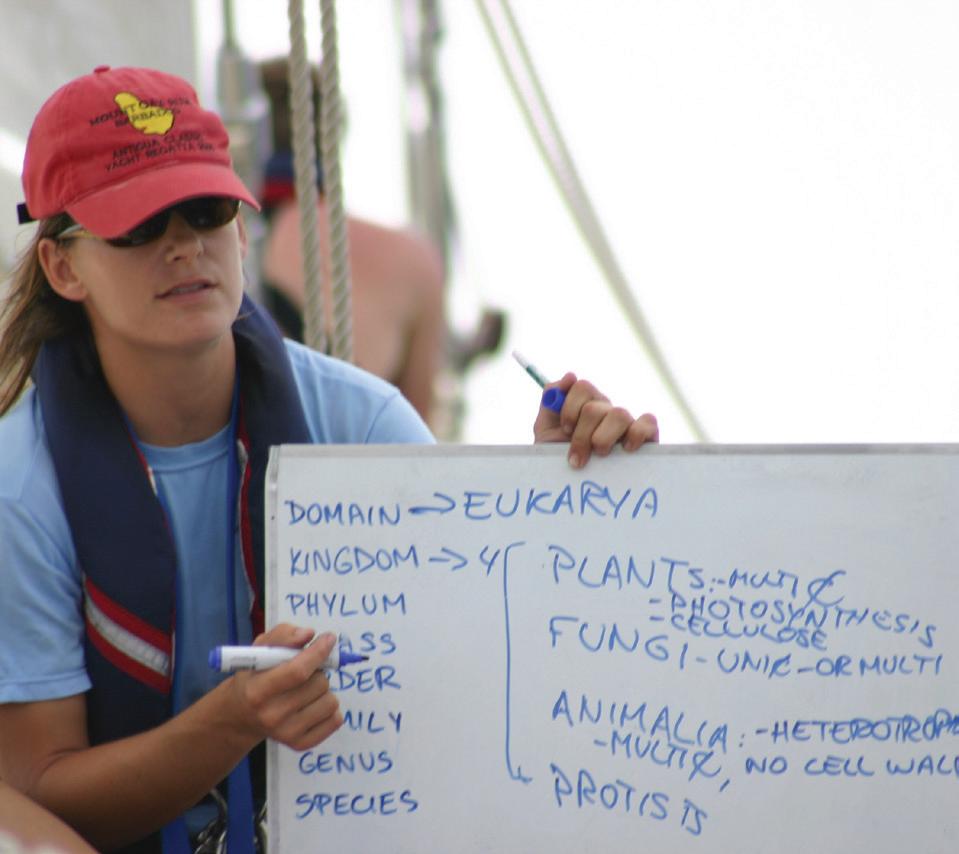
So instead of a classroom slide show about coral reefs you may have the opportunity, as students on Ocean Star did, to work on a project for the National Oceanic and Atmospheric Administration (NOAA) in the Caribbean, studying Elkhorn coral, the first coral listed under the Endangered Species Act. And to have a lesson on our responsibility to the ecosystems that maintain the balance of life on our planet.


Student, Abe Harder-Cattell, described the experience. "We worked in four different areas over a twoday period. At each location, two crewmembers would snorkel using underwater scooters and GPS tracking devices, while two others would dive with either Jessica Fry or Francesca Forrestal, our marine science instructors. The students working with Jessica would help to photograph the corals with identifying serial numbers and measure the colonies, noting any signs of bleaching, disease or recent mortality. The students working with Francesca would help to hammer identification tags into dead coral or rock. Our tagging, searching, and data collecting proved to be successful and at the end of the project Jessica and Francesca awarded us with necklaces made from the metal tags of colonies we were unable to locate because they had died since the last survey."
Students receive college credit from the University of South Florida (USF) for classes in Marine Biology, Oceanography, Nautical Science, and Leadership, while also earning a broad range of sailing and scuba diving certifications through International Yacht Training (IYT) and the Professional Association of Scuba Instructors (PADI).
TO LEARN MORE, VISIT OUR WEBSITE, WWW.SEAMESTER.COM AND DOWNLOAD THE SEA|MESTER STUDENT HANDBOOK. IT INCLUDES ACCREDITATION INFORMATION, INDIVIDUAL COURSE SYLLABI AS WELL AS THE STUDENT CODE OF CONDUCT. ALL PROSPECTIVE STUDENTS NEED TO BE THOROUGHLY VERSED ON THIS INFORMATION PRIOR TO SIGNING ABOARD.

There are lessons to be learned on-board beyond the academics, lessons in personal responsibility, teamwork, and hard work that are in every way just as important as what is learned in class. Our teachers and staff are cognizant of that, and they are just as passionate about imparting those lessons. They take their responsibilities as role models and mentors as seriously as they take the subjects they teach.
"Students often show up with a set of boxes they want to check; be on a boat, go to this island, go to that island, get scuba certification. Maybe they want to make their resume or college application look better. But by the end of the journey they realize that’s not what it’s really about. And that’s not necessarily the most important part of what they take away from the experience,"
—Mike Meighan, Sea|mester’s Director.
Julia Riddle, a former student turned staff member, concurs.
"A lot of people come wanting the end result. They don’t understand that to really get the experience, to get that deep in yourself and in what you’re doing, you have to wake up everyday, you have to look the same people in the eye everyday, and you have to go through the worst and the best together. Lots of students probably don’t actually realize the transformation that’s occurred in them until they get back into the real world and have that benchmark of how everybody else lives their life. We hear that time and time again."
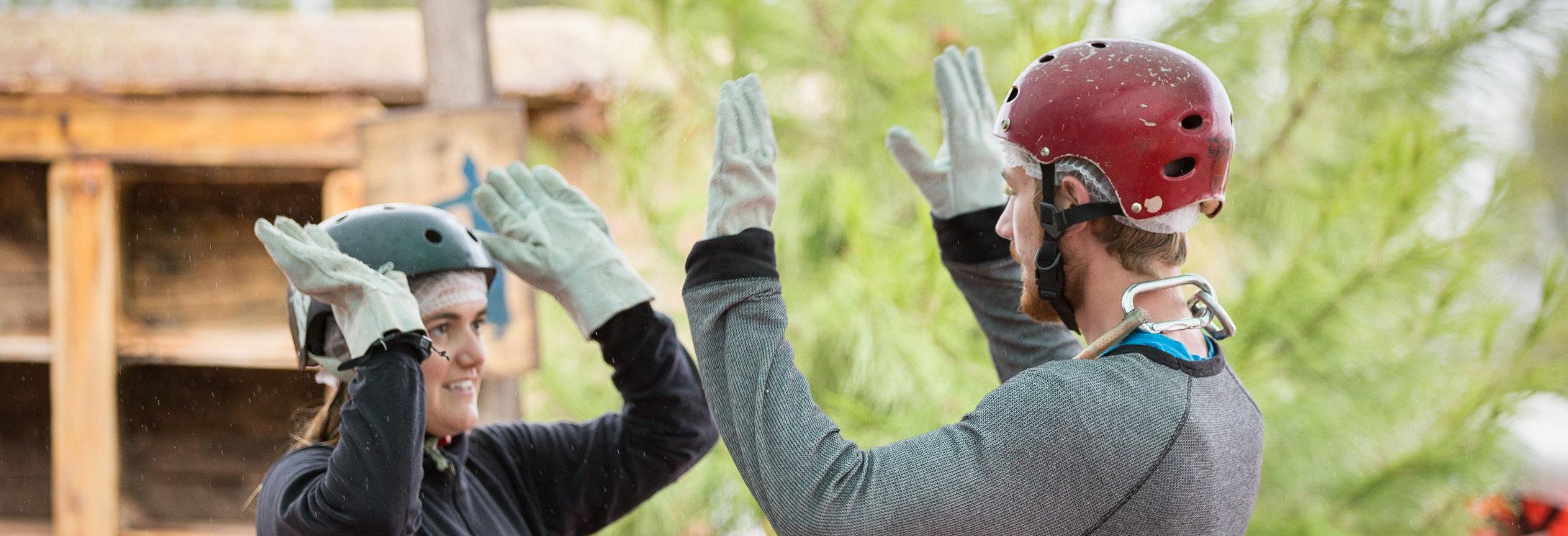

Captain Brendon Baumeister, known affectionately to his shipmates and crew as Boomer, describes the transformation this way.
"They come on as college students. Most don’t pick up after themselves, they’re not exactly used to waking up early every day. But getting up at the crack of dawn – or standing your night watch – is often what’s needed when living on a boat. This isn’t just sailing across an ocean, having drinks with umbrellas in them. They quickly learn it’s cleaning, and working, and waking up early and needing to study even when they feel a little seasick. If it was as easy as a Carnival Cruise they wouldn’t feel anything close to the sense of accomplishment that they feel having sailed across that ocean on a working ship, pulling lines, cooking for one another and taking care of all their academic responsibilities. It’s challenging, but that’s why it’s so rewarding."
"One of the things I see happening is that students see how passionate we are about what we do,” says Chief Scientist Chantale Begin, “and they realize they can live their lives passionately. They may not follow my path and want to be a marine biologist but they find they can live their lives with that spark, with that passion. And they start trying much harder."
And, according to Captain Baumeister, they begin to bring that passion to the experience.
"There comes a point where they start to realize that they are a crew and they start to operate as one. And then all of a sudden you see this remarkable change start to take place where people start looking out for each other and helping each other. And once that switch takes place, all of the sudden, big, powerful things start happening. I’m not really sure exactly how to say it, or how to define it, but it’s the difference between asking somebody what it’s like on day one, and then asking them again on day 80 or 90. They’ve learned marine science, seamanship, sailing and scuba diving. But those are just parts of it. Something much bigger has happened."
That something bigger is the lesson that it is the journey that has mattered most, not the destination. And it is the most valuable lesson our students learn.

SEA|MESTER HELPS COLLECT IMPORTANT SCIENTIFIC DATA ON THE HEALTH AND MIGRATION PATTERNS OF SEA TURTLES IN THE CARIBBEAN.
TO DATE WE HAVE TAGGED AND RELEASED OVER 150 SEA TURTLES.
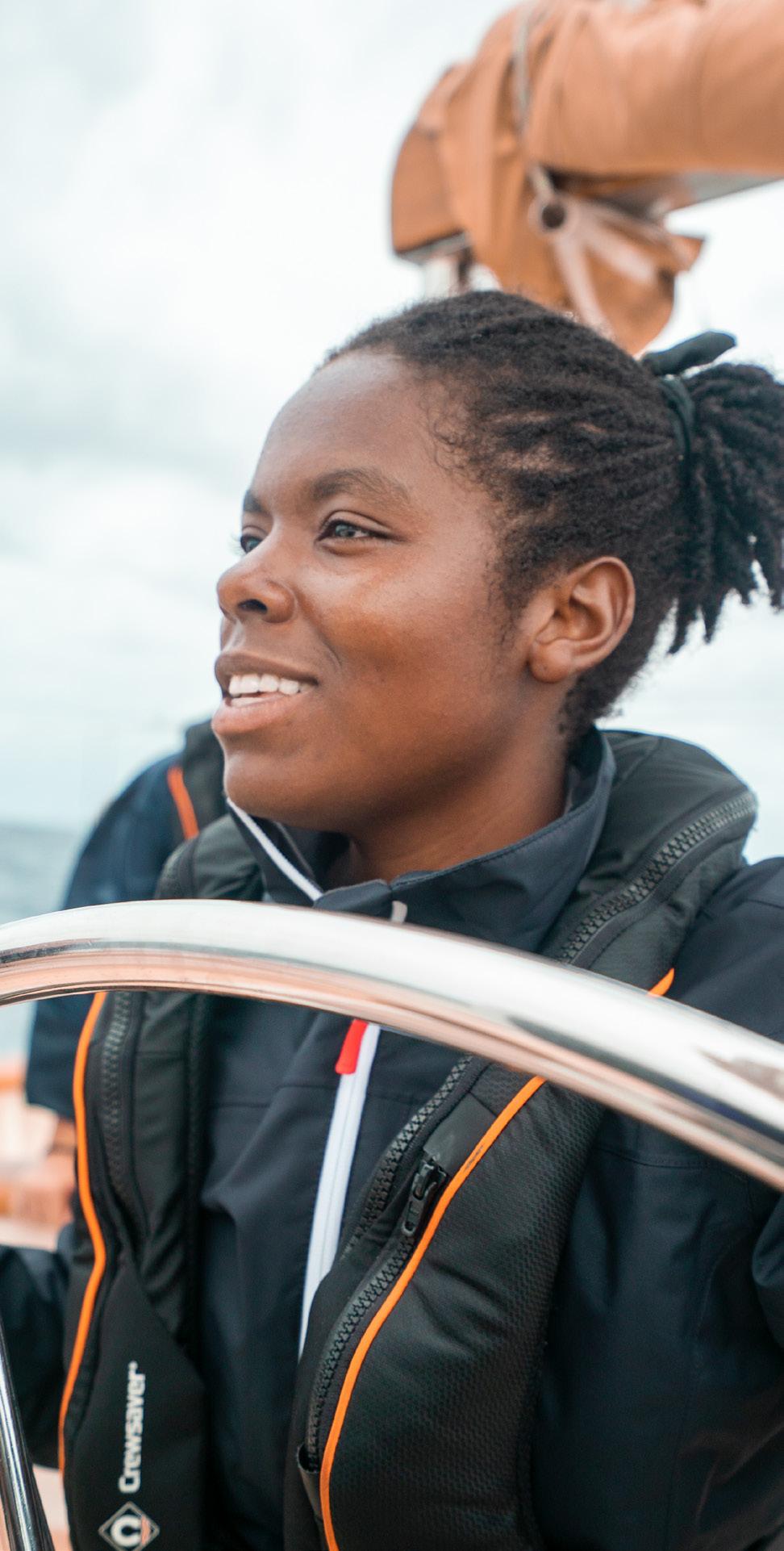
Talk to alumni about Sea|mester and a few things are immediately evident.
Bright and highly articulate, they are clearly motivated and independent, determined to travel their own path through life to make the most of the opportunities they have.
They also uniformly say the same things about the program: that it took them out of their comfort zone and gave them a newfound confidence in their abilities. That they realized they didn’t have to follow a pre-ordained path to success. That the passion, enthusiasm and dedication of their teachers and the staff for what they do was inspirational. And that they formed lasting bonds with their shipmates and have memories of an experience that will stay with them all their lives.

Princeton University
It may seem a long way from spending nights in the Caribbean on an 88-ft schooner to working days as a Trial Preparation Assistant in the Investigative Division of the Manhattan District Attorney’s office, but that’s the journey Barbara Bruce made.

"I’m thinking of doing national security work and this is a great experience while I decide whether I want to go to law school."
It’s a course Sea|mester helped her chart.
"I’d just completed my freshman year at Princeton’s Woodrow Wilson School and was living a typical college life, sleeping late, going out at night, not feeling terribly motivated. I was in the typical college mold of operating on autopilot."
Sea|mester changed all that.
"It completely altered my perception of myself. That summer motivated me and gave me real confidence in my abilities. I developed a totally new perspective. Sea|mester had me trying things I’d never done before. Our Captain used to tell us if we wanted to take a nap, take a nap when we got home. This was the only time we were going to be in such an amazing place doing such amazing things."
"I’d sleep on a hammock on deck and get up at 5:45am so I could see the sunrise. And I woke up with such a terrific sense of excitement and energy. That’s not something that happens everyday at home. I remember on our first night passage to Dominica, it was a 12-hour passage over really choppy water, and most of us were throwing up. And I remember thinking that if this were happening anywhere else I would have felt horrible, but here, even seasick, I was just in heaven being on the boat with all the stars and a feeling of contentment."
"I don’t take the people around me or the things I have for granted anymore. I just feel this heightened awareness of the possibilities of life."
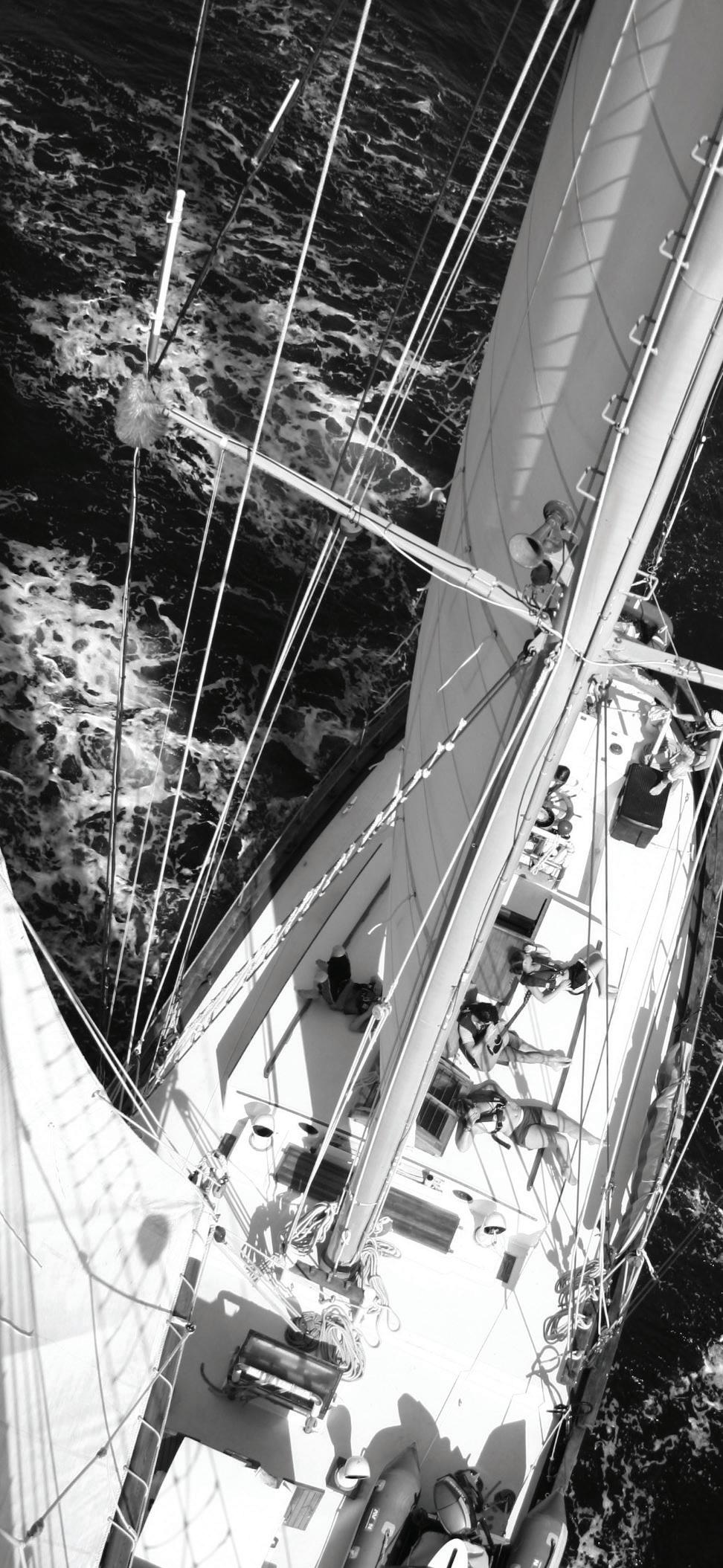
University of London
Having just completed his Masters in Shipping, Trade and Finance at the University of London, Michael Peraticos decided he wanted to get away from the usual and mundane.
"I wanted to be outside life’s conventional four walls and distance myself from what I think of as stereotypical and unchallenged views of life. I wanted something radically different from what I had done so far, which was to continue straight from University into the Masters program. I wanted to live life to the fullest and try to understand myself."

He found Sea|mester through a friend who had been on the program and he thought it would satisfy his desire to travel. He joined Argo in Tarragona south of Barcelona, sailed the Mediterranean, making stops in Gibraltar, Morocco, and then the Canary Islands to pick up supplies. Then it was off on a six-day sail through the Cape Verde islands off the western coast of Africa before crossing the Atlantic to Dominica and finally ending the voyage in the British Virgin Islands.
"It was a profound and intense experience, unlike anything else I had lived. It is hard to describe it to others because you simply have to live certain things to understand them. But I remember a fellow crewmember of mine saying on the 90th day that he was sure that many changes have taken place but that it sometimes took time for them to appear and for you to understand them. We were 30 human beings co-existing within distinct physical boundaries. I think the spirit that existed with my shipmates was unprecedented for me. We grew to be very connected."
Though he is now in Athens working as a shipping consultant, he still feels that same connection to his shipmates.
"The experience that I lived on Sea|mester has certainly empowered me to live life how I see fit and made me believe all things are possible if you use your imagination."


Mani had never had a chance to do a semester abroad, so after graduation she decided it was time to pursue a dream. She had done some sailing in the San Francisco Bay, but had always wanted to know what it would be like to live, learn and travel aboard a boat.

"I didn’t want a cruise ship experience. A semester aboard should be more than a classroom with a waterfront view. Being a part of a working sailing ship was a different way of living and learning because everyone shares responsibility for what they bring to the moment. It’s an opportunity to grow with every minute."
Mani was intrigued and signed up for the 40-day Ocean Star Caribbean voyage.
"My time with Sea|mester and my crewmates gave me training wheels on living a life without compromise. It opened my eyes to infinite possibilities and honed my ability to become the person I aspired to be."
She found her calling. Two years later Mani joined the crew of Argo on a 90-day voyage from the Mediterranean to the Caribbean.
"I remember one night on watch about two in the morning. A small pod of dolphins appeared in front of our bow wake. You couldn’t see them by any normal light, even moonlight – all you could see were the contours of their bodies flickering with phosphorescence, their wake trailing like fairy dust behind. It left me with a deep sense of wonder at Mankind’s tiny place in a vastly beautiful and diverse world."
By the end of the trip she had achieved her goal of obtaining the Master of Yachts 200 ton theory in the hope of one day sailing her own vessel around the world. Now, that dream is coming true. Mani and her fiancé, Andrew, are hard at work building a Farrier-designed 32-ft Trimaran.
"It may take us six months, it may take us six years. But it’s something we’ll do."
No one who sailed with Mani has the slightest doubt.


